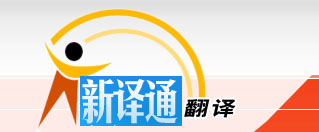研究组位于海南屯昌、琼海、万宁、陵水、定安、三亚主要槟榔产区, 土壤类型主要包括砖红壤、赤红壤、黄壤、滨海沙土、水稻土。北纬18°12.139′~19°20.455′、东经109°26.225′~110°27.037′, 海拔高度为18~171m, 隶属海南岛东中部, 气候温和、东部温差小, 偏中部地组温差相对较大些、雨量充沛, 温度范围在14~37℃, 年平均气温22.9~23.4℃, 年积温8800~9000℃左右, 太阳总辐射量29.8千卡/cm2,日照4364.3h, 年降雨量为2200~4000mm, 年蒸发量2400mm, 相对湿度80%~90%, 属热带湿润季风型气候环境, 夏秋高温多雨、冬春暖和干旱深圳日语翻译。
Research group is located in main Areca catechu L. producing ares of Tunchang County, Qionghai City, Wanning City, Lingshui County, Ding’an County and Sanya City, Hainan Island; soil type mainly includes laterite, latosolic red soil, yellow soil, coastal sand and paddy soil. North latitude is 18°12.139′~19°20.455′, east longitude is 109°26.225′~110°27.037′, height above sea level is 18~171m, under the jurisdiction of eastern and central regions of Hainan Island, mild climate, temperature difference in the east is small, formation temperature difference of slightly medium region is relatively larger, plentiful rainfall, temperature range is 14~37℃, annual average temperature is 22.9~23.4℃, annual accumulated temperature is about 8800~9000℃, total solar radiation is 29.8 kcal/ cm2, sunshine is 4364.3h, annual rainfall is 2200~4000mm, annual evaporation capacity is 2400mm, relative humidity is 80%~90%, belongs to tropical humid monsoon regime climatic environment, high temperature and rainy in summer and autumn, warm and dry in winter and spring.
1.2 野外调查及样品采集
在海南东中部不同的地区, 采集土壤和植株样(GVS定位)广州日语翻译。其中包括琼海、万宁、屯昌、陵水、定安、三亚六个市县: 土壤类型包括砖红壤、赤红壤、黄壤、滨海沙土、水稻土, 采样土壤肥力状况(见表1)。生产管理水平包括高产组(槟榔年产量≥16500 kg/hm2)、中高产组(槟榔年产量≥12375 kg/hm2; <16500 kg/hm2)、中产组(槟榔年产量≥8250 kg/hm2; <12375 kg/hm2)、低产组(槟榔年产量<8250 kg/hm2)、黄化组(轻)(发病初期, 年产量<1650 kg/hm2)和黄化组(重)(发病后期, 年产量几乎为0), 除槟榔黄化病组(槟榔从发病到植株死亡时间为6-8年), 采样点不按生长年限而确定外[25], 其它不同产量组皆选取生长年限为10、15、20和25年生槟榔种植地作为采样试验基地, 槟榔采用常规栽培技术,种植密度为2m×3m。供试槟榔植株为正常结果树和黄化病树。植物样点组域: 高产组: (10年(n=4, n代表采样组域数); 15年(n=4); 20年(n=4); 25年(n=4)); 中高产组: (10年(n=4); 15年(n=4); 20年(n=4); 25年(n=4)); 中产组: (10年(n=4); 15年(n=54); 20年(n=4); 25年(n=4)); 低产组(10年(n=4); 15年(n=4); 20年(n=4); 25年(n=4)); 黄化组(轻)(n=7); 黄化组(重)(n=8);
1.2 Field Investigation and Sample Collection
Collect the soil and plant samples (GVS positioning) in different areas of east and central regions, Hainan Province. It includes six cities and countries, Qionghai City, Wanning City, Lingshui County, Ding’an County and Sanya City; soil type includes laterite, latosolic red soil, yellow soil, coastal sand and paddy soil; see Table 1 for fertility condition of sampling soil. Production management level includes high-yield group (annual output of areca catechu L≥16500 kg/hm2), high-middle yield group(annual output of areca catechu L≥12375 kg/hm2; <16500 kg/hm2), low-yield group (annual output of areca catechu L<8250 kg/hm2), light yellow leaf disease group (initial period of disease incidence, annual output of areca catechu L<1650 kg/hm2) and severe yellow leaf disease group (later period of disease incidence, annual output is almost 0), except for Areca catechu L. in yellow leaf disease group (from disease incidence of Areca catechu L. to death time of plant is 6-8 years), sampling point is not confirmed according to growth years[25], other different output groups select the Areca catechu L. plantation with 10, 15, 20 and 25 growth years as the sampling test base. Areca catechu L. adopts conventional cultivation techniques; planting density is 2m×3m. Test Areca catechu L. plant is normal fruit bearing tree and yellow leaf disease tree. Sample point group field: high-yield group: (10 years (n=4, n stands for field number of sampling group); 15 years (n=4); 20 years (n=4); 25 years (n=4); medium and high-yield group: (10 years (n=4); 15 years (n=4); 20 years (n=4); 25 years (n=4) ; medium yield group: (10 years (n=4); 15 years (n=4); 20 years (n=4); 25 years (n=4); low-yield group (10 years (n=4); 15 years (n=4); 20 years (n=4); 25 years (n=4); light yellow leaf disease group (n=7); severe yellow leaf disease group (n=8);


